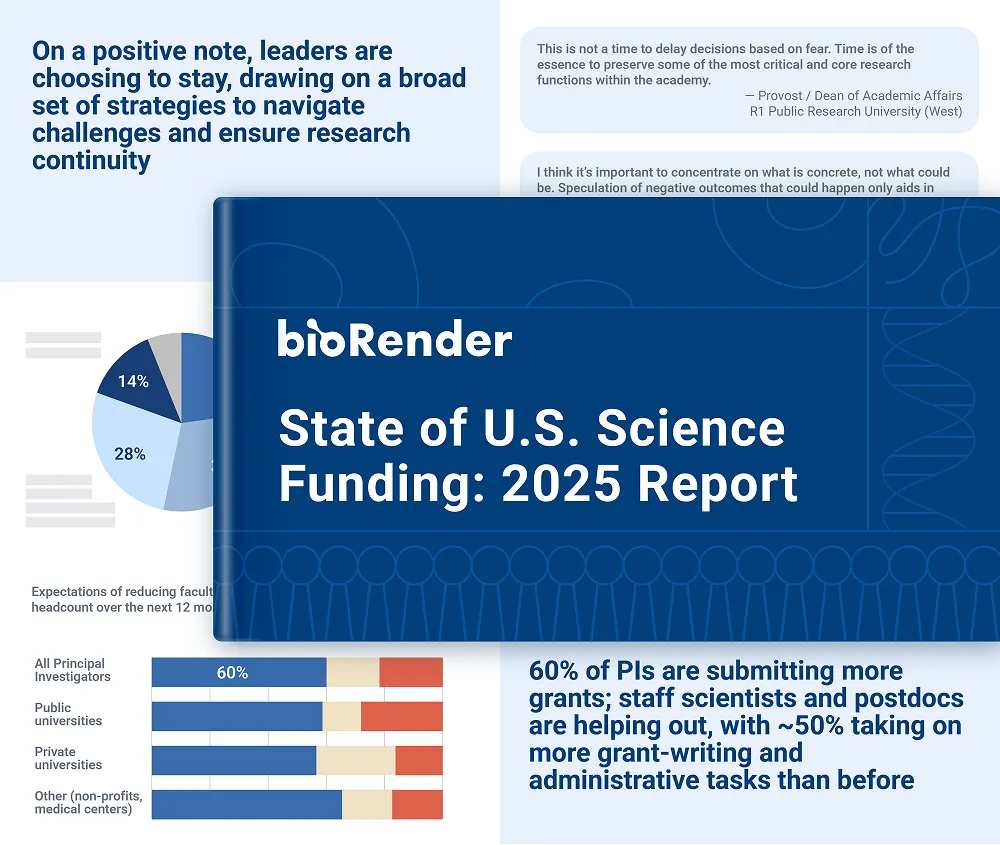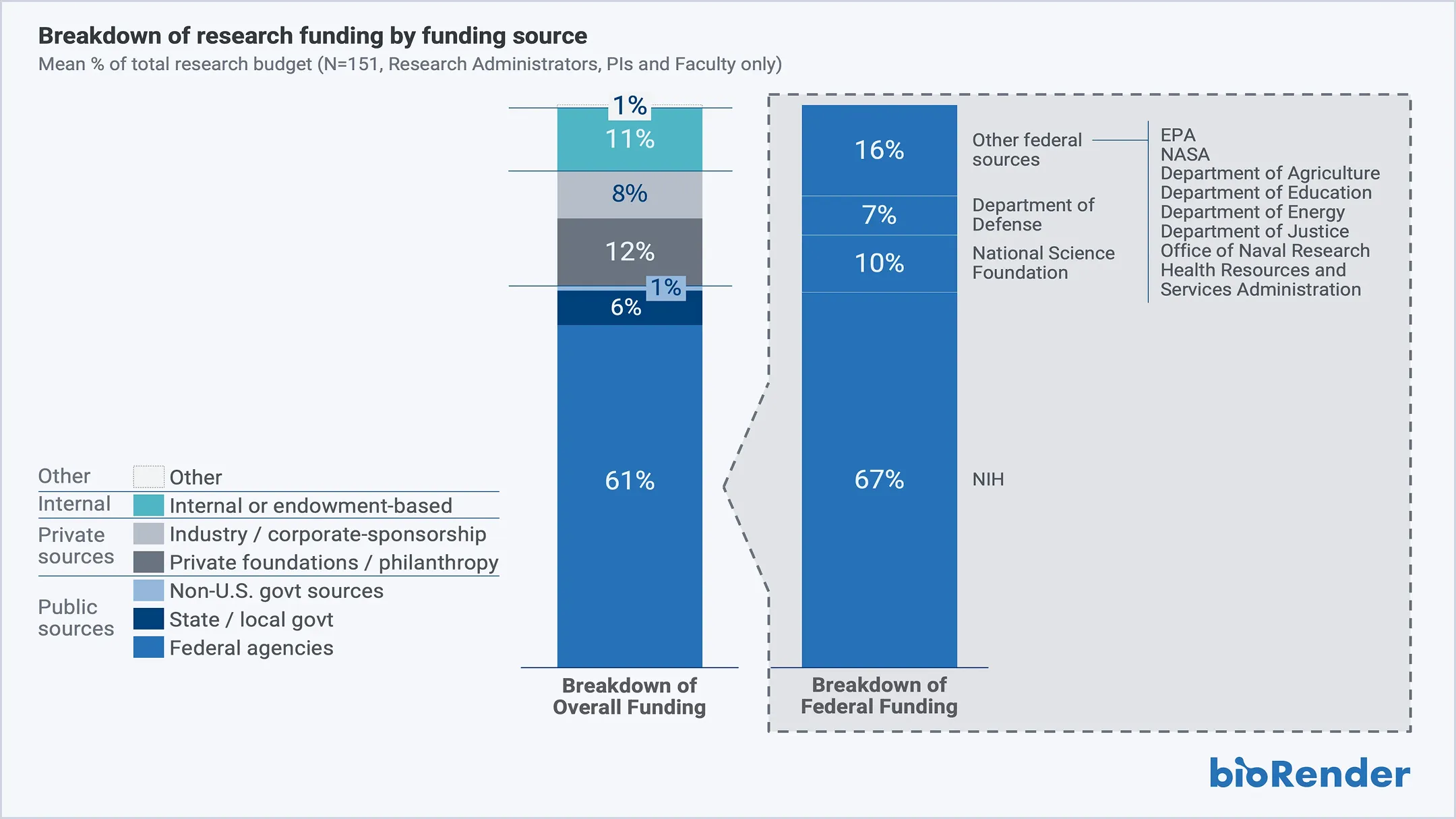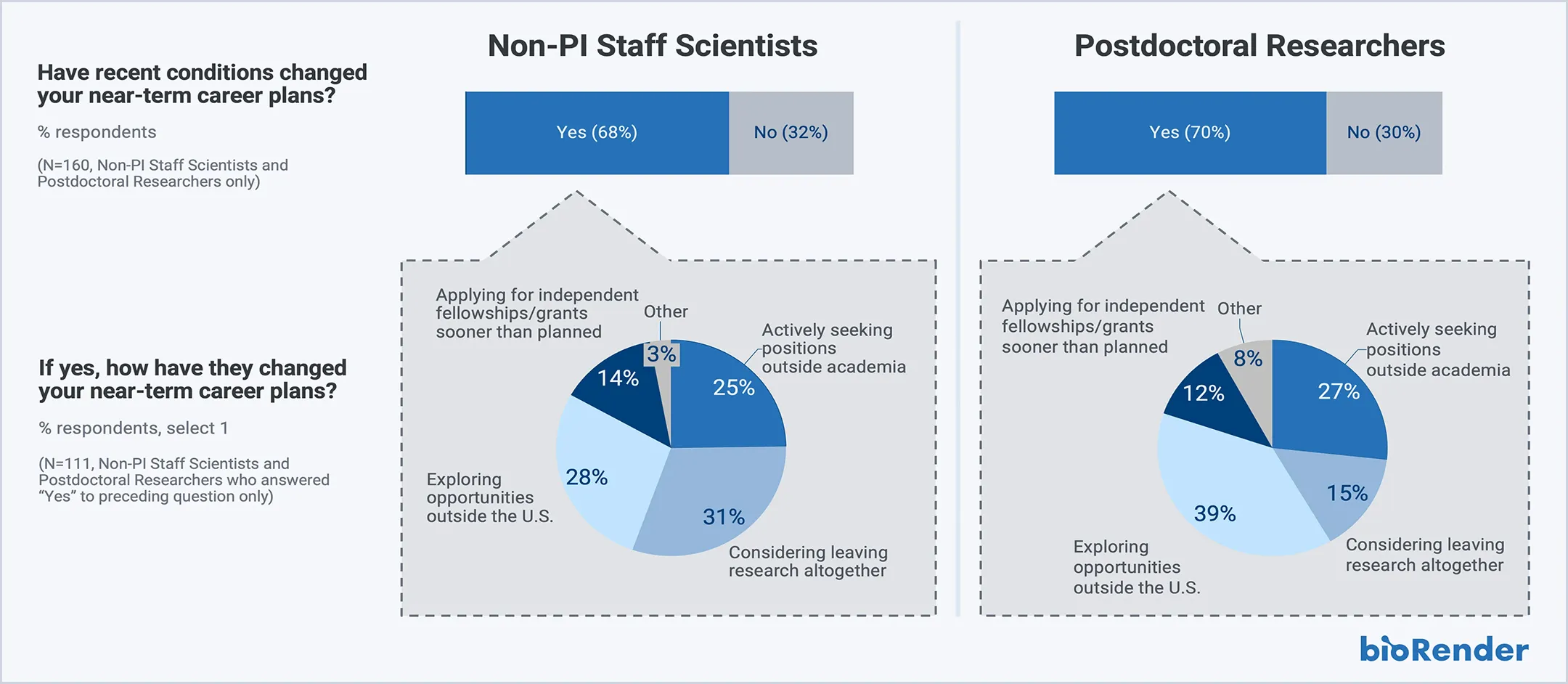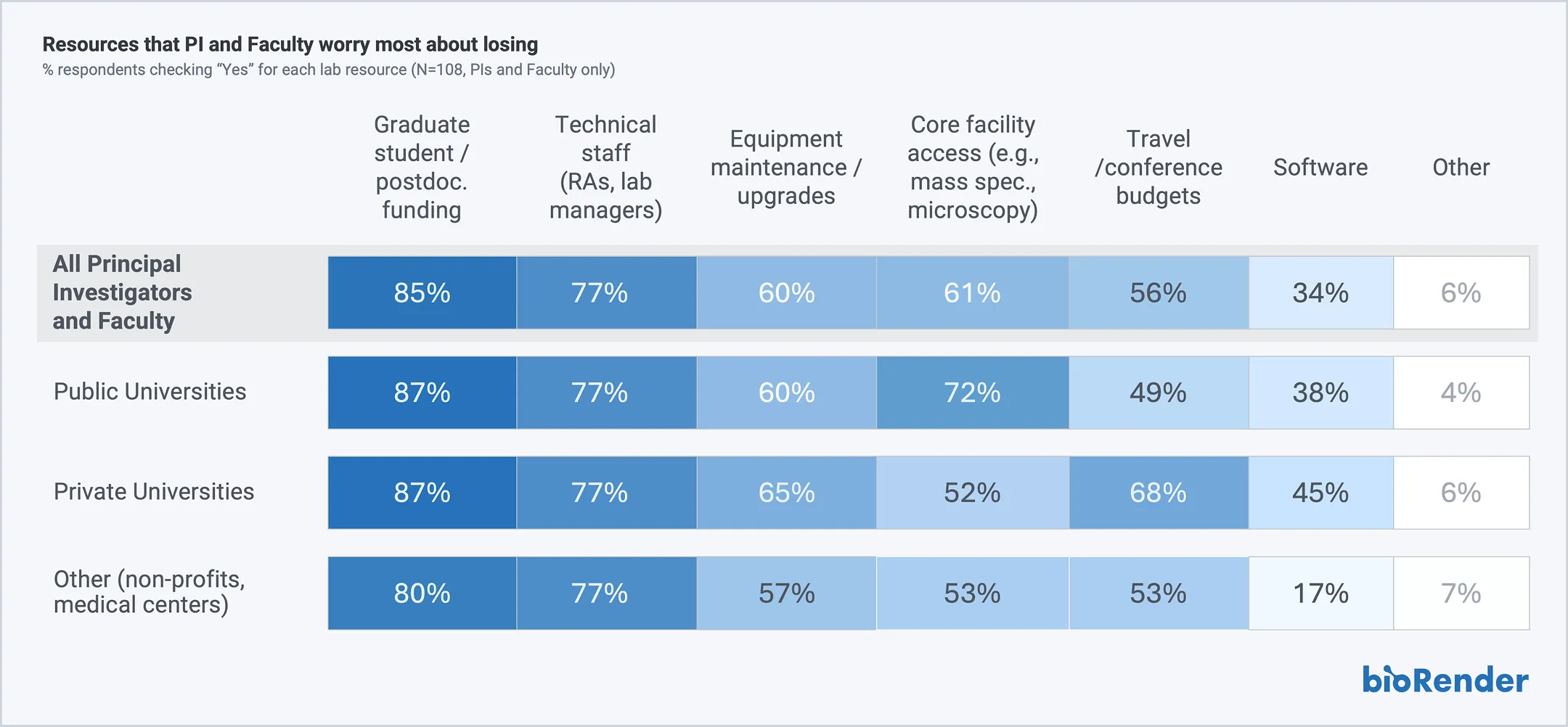Report Summary
The federal funding crisis in U.S. science is no longer unfolding quietly. The headlines are familiar: federal research budgets are shrinking, morale is plummeting, and early-career scientists are rethinking their future.
So what are scientists doing now, and what are they planning for the immediate future? To find out, we surveyed 311 scientists and institutional leaders across the U.S., from postdocs to deans of research, to understand how they’re navigating this pivotal moment.
The findings are sobering:
- 57% of non-PI staff scientists and postdoctoral researchers are considering leaving US academia
- 87% of principal investigators report their labs are already experiencing or expect serious financial strain
- 80% of research administrators say they will likely reduce headcount in the next 12 months
Yet, most senior research leaders are not backing down. They are increasing grant submissions, and pivoting directions. Nearly 70% say they are actively pursuing alternative, non-federal funding sources such as private foundations and industry partnerships.
As one VP for Research put it: “This is a threat to the future of science in the U.S. on the global stage.” Leaders fear that without bold action, the U.S. could lose its position as a global scientific leader for generations to come.
This report offers a rare snapshot of how institutions are responding: what they’re prioritizing, where they’re struggling, and how they’re fighting to protect the future of U.S. science.






